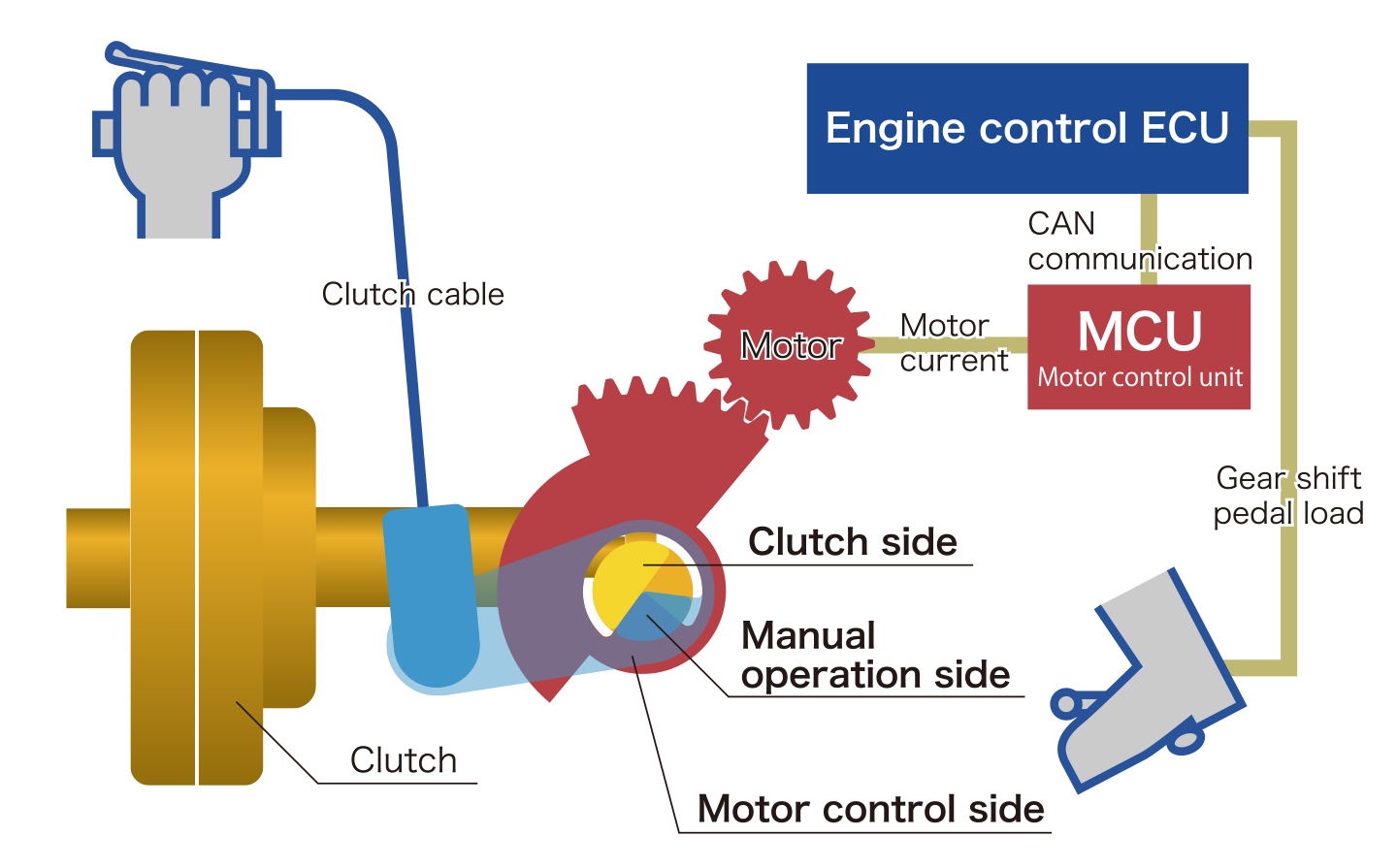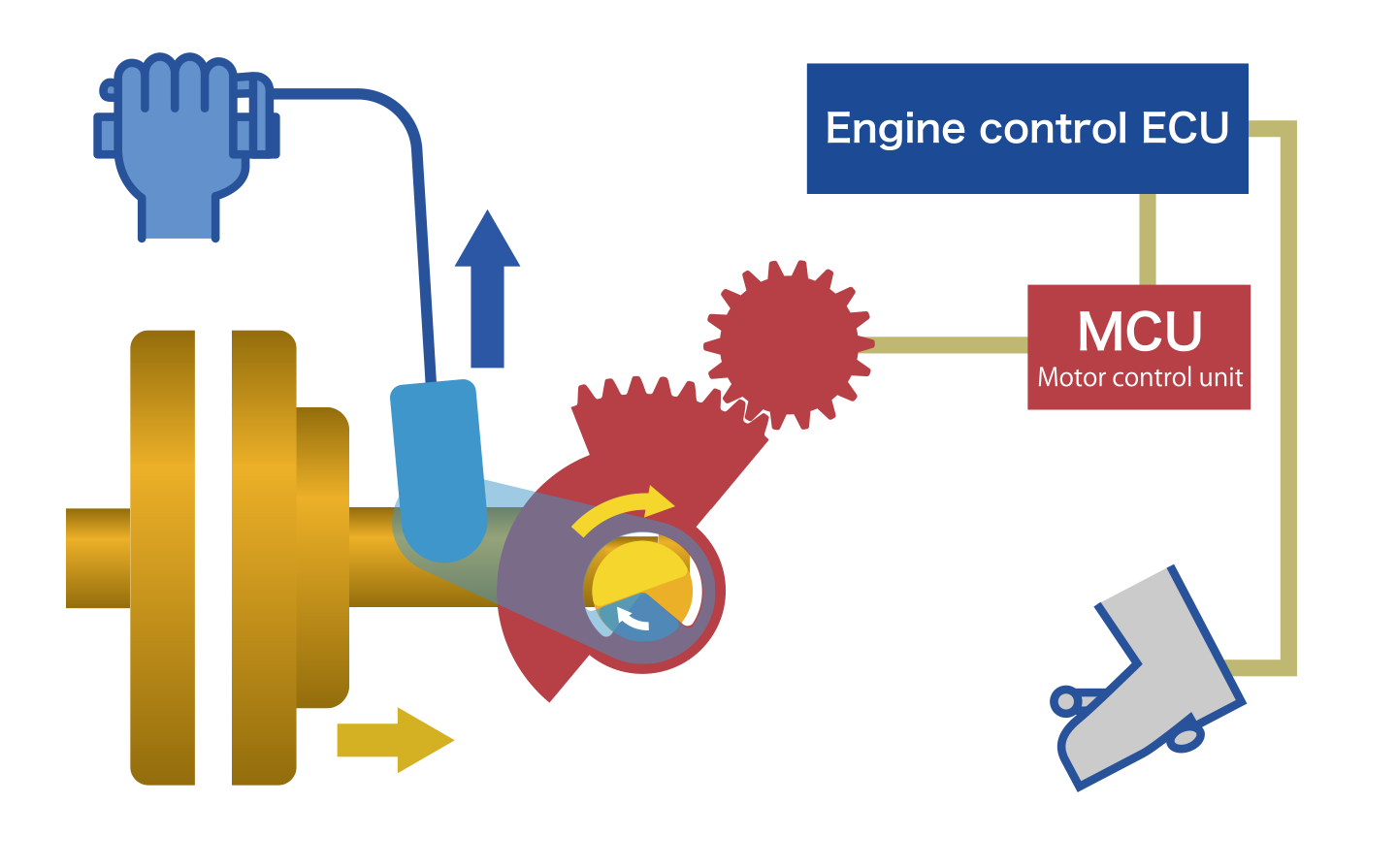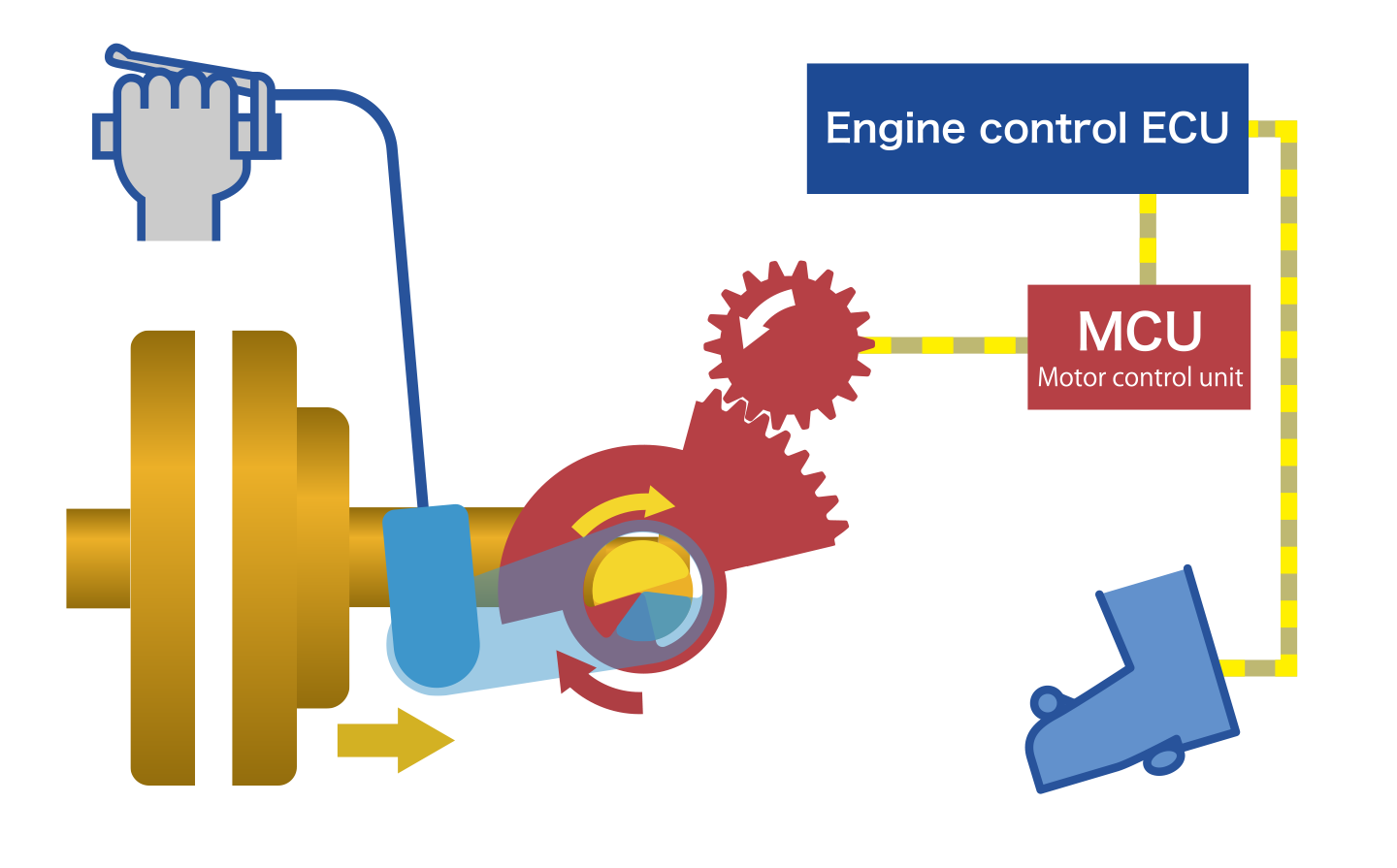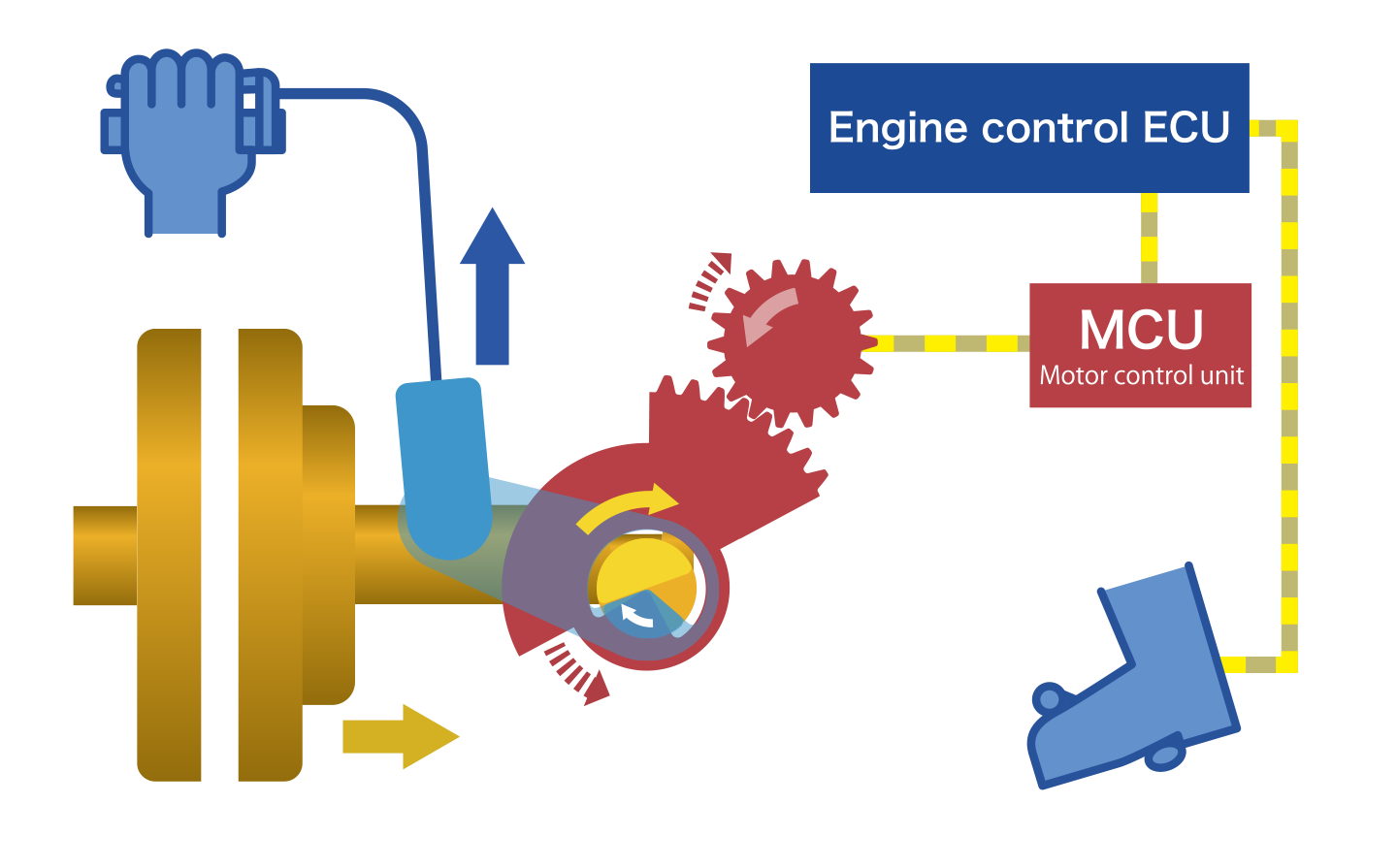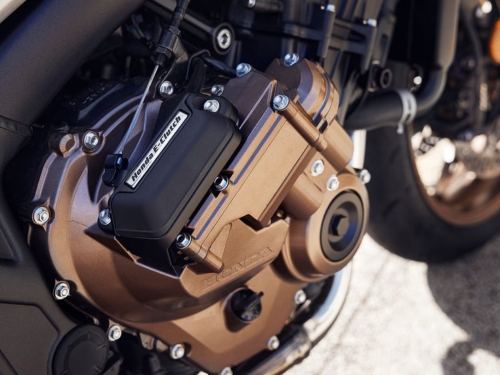
Long story short: Learn how Honda E-Clutch works, pros, cons, which bikes have it in India, benefits, maintenance tips, performance impact and much more right here.
Have you ever thought of having an automatic gearbox feature that we see in our cars can be seen in motorcycles too?. That fantasy is now reality, with Honda introducing state-of-the-art Honda E-Clutch technology in India, available in two models. Time to delve into this new, emerging technology and examine all its aspects.
What is Honda E-Clutch?
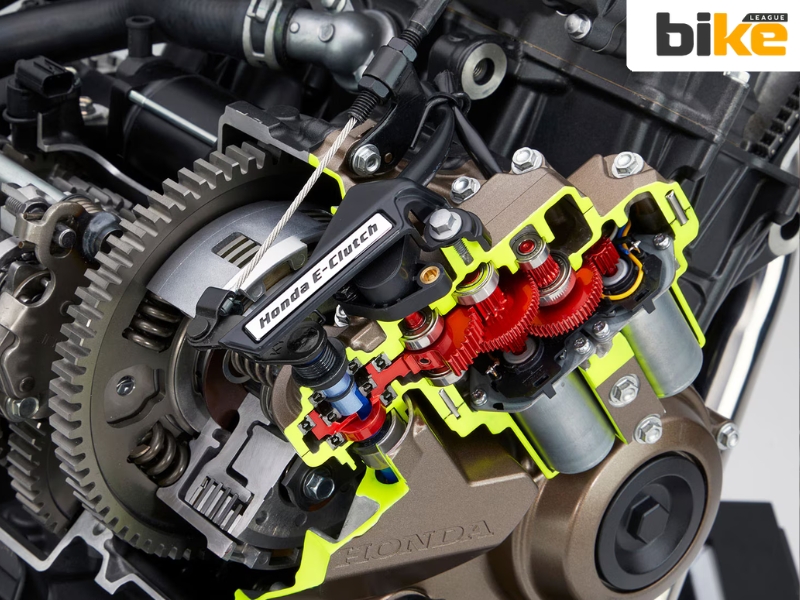
Honda’s e-Clutch is an electronic clutch system that allows riders to shift gears without using the clutch lever. It features servo motors for clutch engagement, making riding in traffic easier and less tiring. This system offers a blend of manual engagement and automatic convenience.
- Automatic and Manual Control: Riders can switch between fully automatic clutch control and manual operation, offering flexibility and a unique riding experience.
- Servo Motors: The system uses a pair of servo motors mounted on a special casing for controlling the clutch.
What are the Key Features of the Honda Electronic Clutch?
Key features of the Honda E-Clutch are as follows:
- Automatic Clutch Control: Manages clutch engagement and disengagement electronically, allowing gear changes with the foot pedal without using the handlebar clutch lever. This reduces stalling risks and simplifies starts, stops, and shifts, especially for beginners.
- Manual Override: Riders can easily switch to manual mode by pulling the clutch lever, maintaining full control when needed. The system can also be turned off for traditional clutch operation.
- Quick-Shifter Functionality: Enables clutchless shifting both up and down, similar to a quick-shifter, for improved performance during spirited riding.
- Advanced Sensors and Electronics: Utilises multiple sensors to manage clutch actuation based on engine RPM, throttle angle, gear position, and other data for precise operation.
- Smooth and Fast Response: Electronic actuation provides quicker and smoother shifts compared to manual operation, reducing mechanical shock.
- Reduced Fatigue: Automatic clutch operations lessen rider fatigue, particularly in heavy traffic or on long rides.
- Compact, Lightweight Design: Incorporates two small servo motors, adding only about 2.8kg to the bike’s weight while preserving ergonomics.
- Maintains Manual Gearbox Feel: Unlike fully automatic systems, the E-Clutch delivers the direct connection of a manual gearbox, retaining the traditional riding experience.
How Does Honda Electronic Clutch Work?
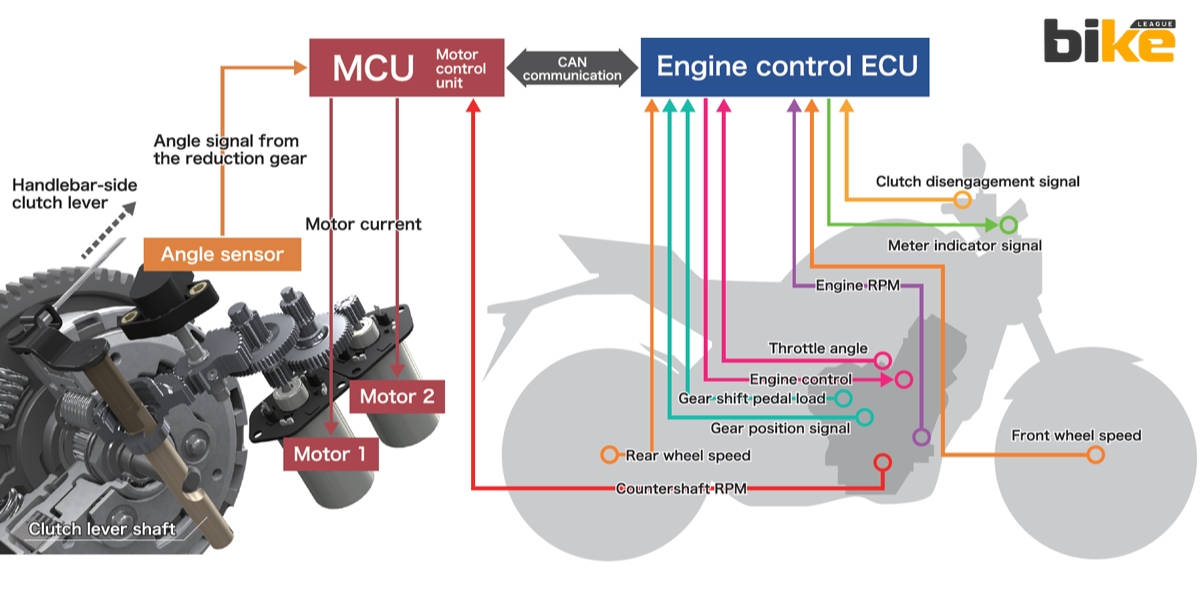
The E-Clutch features a compact actuator unit on the engine with two servo motors that control the clutch through a specialised three-part actuator shaft. One part connects to the manual clutch lever, while the other is driven by the motors for electronic control.
The motor control unit (MCU) continuously receives data from sensors that monitor engine RPM, throttle angle, wheel speeds, gear position, shift pedal load, and a rotation sensor on the clutch.
When the rider shifts gears, the MCU processes this data and activates the servo motors to engage or disengage the clutch at the right moment. This allows for smooth, clutchless gear shifts without using the lever, minimising shift shock and stalling.
Additionally, the system can partially engage the clutch for low-speed starts, stops, or challenging riding situations, making it easier in stop-and-go traffic or on hills.
- You can ride entirely without using the clutch lever for starting, shifting, or stopping—the system manages it all automatically.
- If you prefer, you can override the automation by simply pulling the clutch lever; this immediately gives the rider full manual control.
- Shifting is possible at any RPM and with either open or closed throttle.
- When the system is turned off (e.g., via switchgear), the bike operates like a standard manual motorcycle, requiring clutch lever use for all operations.
Which Honda models in India have the E-Clutch feature?
As of 2025, the only Honda models in India equipped with the E-Clutch feature are the CB650R and the CBR650R. These are premium middleweight motorcycles that both received the E-Clutch variant in May 2025.
Both motorcycles share the same 649cc, inline four-cylinder engine and a 6-speed gearbox. The E-Clutch system enables clutchless starts, stops, and gear shifts but retains the manual clutch lever for full manual override if needed. Bookings for both models are available at Honda BigWing dealerships across India, as well as online. No other Honda motorcycle or scooter in India offers the E-Clutch technology as of 2025.
Pros of Honda Electronic Clutch
- Effortless Gear Shifts: Riders can change gears without using the clutch lever, reducing fatigue, especially in heavy city traffic.
- Seamless Operation: The system ensures smoother gear transitions and minimises mechanical shock during shifts, providing a more comfortable ride experience.
- Manual Override Available: For enthusiasts who prefer traditional control, the system allows manual clutch input via the lever at any time.
- Adaptable for New and Experienced Riders: Makes riding easier for beginners. In contrast, experienced riders can still enjoy manual control when desired.
- Reduced Fatigue: City commuters benefit from less strain on their left hand, as frequent clutch use is eliminated in stop-and-go traffic.
- No Sacrifice of Manual Thrill: Riders can still enjoy the engagement and performance-oriented feel of a manual gearbox when they choose.
- Convenient in Slow Traffic: Automatic clutch actuation prevents stalling and ensures smooth takeoffs and stops.
- Enhanced Electronics: The e-Clutch comes as part of a suite of modern features, including a TFT display and smartphone connectivity.
Cons of Honda Electronic Clutch
- Increased Weight: The e-Clutch system adds approximately 2.8kg to the motorcycle, which could marginally affect handling or performance for some riders.
- Complexity and Potential Maintenance: The addition of servo motors and electronic controls increases system complexity, potentially leading to higher repair costs if issues arise.
- Price Premium:Bikes equipped with e-Clutch technology come at a higher ex-showroom price compared to standard models.
- Learning Curve: While basic operation is easier, riders familiar with traditional clutches may need time to acclimate, especially when switching between modes.
- Currently Limited Availability: As of 2025 in India, e-Clutch is only offered on select Honda premium models (CB650R and CBR650R).
How does the E-Clutch system affect the overall performance and maintenance of the motorcycle over time?
The Honda E-Clutch system significantly impacts motorcycle performance and maintenance:
Performance
- The E-Clutch allows for smoother, faster gear shifts by electronically controlling clutch engagement, enhancing comfort and rideability, especially in traffic.
- It enables clutchless starts, stops, and shifts, reducing rider fatigue and the chances of stalling.
- Automatic clutch actuation enhances precision and consistency in gear changes, benefiting all riders.
- However, the system adds approximately 2.8 kg to the bike, which may slightly affect handling and agility.
Maintenance
- The E-Clutch is more complex due to its electronic components, increasing the potential for faults that need specialised diagnostic tools and expertise.
- Maintenance costs may rise compared to traditional clutches due to these additional parts.
- Regular inspections of the servo motors and sensors are essential for smooth operation.
- Any sensor faults or wiring issues can disrupt clutch performance.
- Not all service centres are equipped to handle E-Clutch servicing, making it necessary to use authorised Honda dealerships.
- Frequent switching between automatic and manual modes may lead to wear if not appropriately managed.
FAQ about the Honda Electronic Clutch technology
1. Which Honda models in India currently have E-Clutch?
As of 2025, Honda offers E-Clutch exclusively on the premium 649cc Honda CB650R and CBR650R motorcycles.
2. Can I still use the clutch manually with E-Clutch?
Yes, riders can override the E-Clutch system and operate the clutch lever manually anytime they wish, preserving complete control over gear shifts.
3. Does E-Clutch add extra weight to the bike?
Yes, the E-Clutch system adds about 2.8 kg to the motorcycle’s weight compared to standard models.
4. Does this technology eliminate the need to shift gears?
No, riders still have to manually operate the gear shift lever; the system only automates clutch engagement and disengagement.
5. Is this technology available for smaller or electric bikes?
Currently, no. Honda is considering more affordable E-Clutch versions for smaller bikes. Still, as of 2025, it is only available on the CB650R and CBR650R. Electric scooters do not have multi-gear transmissions and do not require a clutch.
6. Does E-Clutch improve riding comfort?
Yes, it reduces left-hand fatigue in stop-and-go traffic. It enables smoother gear shifts, enhancing comfort especially in urban settings.
7. How much does the E-Clutch variant cost compared to regular models?
The E-Clutch variants of CB650R and CBR650R are priced about ₹40,000 higher than their standard counterparts.
8. What happens when the bike comes to a stop with this system?
The system automatically disengages the clutch to prevent stalling, allowing riders to stop and start smoothly without using the clutch lever.
9. Are there customisation options for this system?
Yes, riders can select different shift feel settings (Soft, Medium, Hard resistance) for upshifts and downshifts via the bike’s TFT menu.
Other related links from Bikeleague India
- Bike clutch – Different types explained with pros & cons
- Second hand motorcycle: Things to know when buying It
- Bike engine oil – Everything you need to know explained
Conclusion
Throughout this article, we have discussed the Honda E-Clutch in depth, including its features, FAQs, performance, maintenance, pros, and cons. If you have any other doubts or queries, email us at bikeleague2017@gmail.com. You can also share your doubts or opinions in the comments section below. We are always eager to help and assist you. Also, here are several social media platforms of Bikeleague India to raise your suspicions.

